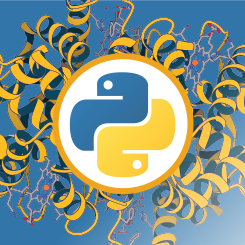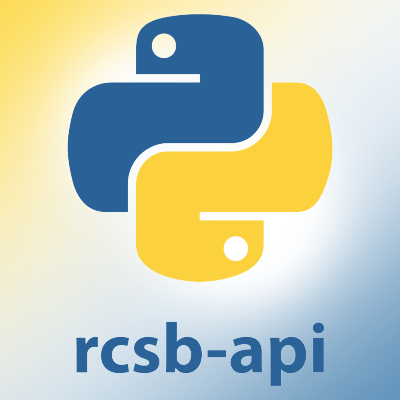 |
Structures of many macromolecular assemblies are increasingly determined using integrative approaches, where information from multiple experimental and computational sources is combined. Structures determined using integrative and hybrid methods (IHM) are deposited and processed by the wwPDB, issued PDB accession codes, and archived alongside experimental structures in the PDB archive. RCSB.org offers expanded access to integrative structures. In this webinar, we will demonstrate how to use RCSB PDB tools to find, visualize, and analyze IHM PDB structures together with other PDB experimental structures and Computed Structure Models (CSMs).
|
 |
Globally, plastic production has surpassed 8 billion tons, however, less than 10% has been recycled. Plastic has replaced other materials such as wood, metal, and glass due to low production costs, with production continuing at a rapid rate of over 400 million tons per year. However, recycling costs for plastic remain high necessitating the development of new recycling technologies. Over the last decade, plastic-degrading enzymes have become a rich area of biotechnology discovery. In this webinar, we will demonstrate how to use RCSB PDB tools to explore structures of plastic-degrading enzymes. These tools and the underlying PDB data are critical for advancing the biotechnologies of plastic recycling.
|
 |
High-quality ligand-bound structures are indispensable for understanding the interaction between small molecule ligands and their target proteins and nucleic acids. In this webinar, we illustrate the PDB ligand validation and annotation process, and explain the metrics that measure ligand quality from various perspectives. Learn how to search the PDB for high-quality ligand-bound structures using these metrics via RCSB.org and RCSB PDB APIs.
|
 |
Interested in molecular animations but not sure how to get started? Learn how to create a simple storyboard and use the UCSF ChimeraX and other free resources to create simple animations of 3D protein structures available on RCSB.org. The content of the video lecture provides a walk through the animation process from start to finish. Users can also use the Full Animation Tutorial with the ChimeraX sessions provided below to recreate the example video used in the lecture.
|
 |
This workshop uses Python scripting to explore and compare small molecules that bind to the SARS-CoV2 main protease. Work is performed in a Google CoLab environment and involves a number of libraries heavily used for cheminformatics.
|
 |
This webinar introduces and demonstrates usage of the rcsb-api Python package which enables researchers to easily interact with RCSB PDB Search and Data API services. Using this toolkit, users can seamlessly integrate search and data retrieval tasks into computational workflows for custom analyses.
|
 |
Viruses represent major threats to global health. Historically, pandemics of influenza, polio, smallpox, and many other viruses have spread through populations numerous times, killing and maiming millions of individuals. Outbreaks of influenza A H5N1 are hitting poultry and dairy farms across the nation, with impact on the economy and public health.
|
 |
As macromolecular structures available through the Protein Data Bank (PDB) archive continue to grow in complexity and size, traditional text data formats like PDBx/mmCIF and the legacy PDB file format are becoming increasingly inefficient for transfer and parsing. To support scalable data analysis, binary formats and compression techniques are now essential. Learn how to future-proof your data analysis with BinaryCIF, a fully interchangeable yet drastically more efficient flavor of the PDBx/mmCIF format. BinaryCIF not only boosts storage efficiency, but also substantially improves parsing speed, making it ideal for large-scale analyses. BinaryCIF is supported by resources such as RCSB PDB, PDBe, and AlphaFold DB.
|
 |
In the second edition of this webinar, SARS-CoV-2 Main Protease is used to introduce and reinforce the use of RCSB.org resources for teaching protein structure and function.
|
 |
Learn about primary PDB structure quality metrics, including those in the validation slider graphic; how PDB structure quality varies across the archive; and identify good structure(s) for research from RCSB.org.
|
 |
Learn how to use RCSB.org features to navigate 3D predicted protein structures in the context of experimentally-determined PDB structures. Two case studies are provided: Low-density Lipoprotein Receptor Adapter Protein 1 (LDLRAP1) and Class II aminoacyl-tRNA synthetases.
|
 |
Mol* (MolStar) is a web application available on RCSB.org designed for visualizing biomolecular structures in 3D.
|
 |
This webinar uses the example of SARS-CoV-2 Main Protease to introduce or reinforce the use of RCSB.org resources for teaching protein structure and function.
|
 |
This course introduces users to the two main APIs that power the RCSB.org website: Data API and Search API. The live course consisted of two parts: Part 1 featured lectures that introduced the APIs (October 12), while Part 2 featured hands-on sessions held twice (October 19 and October 24). The hands-on session consisted of two coding examples demonstrations followed by hands-on coding in break out rooms. Only the coding demonstrations from Part 2 are available in this online course.
|
 |
Understand the basics of PDBx/mmCIF data dictionary and file format that underpin archiving of more than 200,000 experimentally determined three-dimensional biostructures in the PDB. Learn about software tools for generating and working with PDBx/mmCIF files, and programmatic access for harvesting PDB data.
|
 |
In August 2022, the RCSB PDB enabled access to ~1 million Computed Structure Models (CSMs) from AlphaFoldDB and RoseTTAFold in addition to the ~200,000 experimentally-determined PDB structures on the RCSB.org website. A Virtual Crash Course was held to inform the RCSB.org users how to search, visualize, and analyze CSMs alongside experimentally-determined PDB structures using the custom-developed RCSB PDB tools.
|
 |
At this virtual course, the participants had the opportunity to learn about the protein structure-related tools, visualizations, and workflows that have been integrated into DOE KBase. This course was organized jointly by RCSB PDB and DOE KBase.
|
 |
In this workshop, Python scripting and libraries are used to explore ligand binding to enzymes. The corresponding Jupyter notebooks are customizable for individual research and teaching purposes. This course was developed by Paul A. Craig (Rochester Institute of Technology) and Jessica A. Nash (Molecular Sciences Software Institute).
|
 |
This is the second part of the IQB Crash Course designed to introduce life scientists to the power and flexibility of solving problems with Python. This course offers a brief review of Python and the Jupyter Notebook environment first, later diving into working with Python libraries and various types of data.
|
 |
This workshop familiarizes life scientists with the power and flexibility of solving problems with Python by introducing specific coding skills, as well as providing insight into the broader array of open-access resources and libraries that are available for scientific computation. This course was presented by Paul A. Craig, Professor of Biochemistry, Rochester Institute of Technology (RIT) and Jessica A. Nash, Software Scientist, Molecular Sciences Software Institute (MolSSI)
|
 |
These materials were used in a June 2020 Boot Camp for undergraduate researchers held virtually to understand how the protein evolved during the first six months of the COVID-19 pandemic by exploring amino acid sequence and 3D atomic-level structure using various structural bioinformatics tools.
|